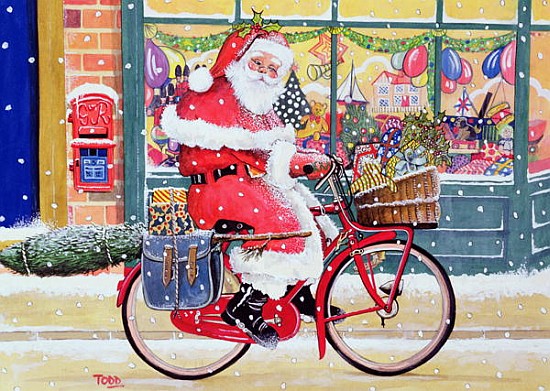I guess I could say that I ended this year in a way that reflects the kind of year it's been: rather lovely, but unexceptional.
Early this afternoon, I boarded Tosca for a ride through familiar places to a familiar destination. Even the detours were familiar: through backstreets lined with cute little brick houses and restaurants of various nationalities, by the tidal marshes by Jamaica Bay and up and down stretches of reconstructed, but still not reconnected, boardwalks in Rockaway Beach and Jacob Riis Park.
Those detours, and the headwind into which I pedaled through much of my ride made it longer, timewise, than it would normally be. Even though I did not consciously choose them, I believe that some internal guide steered me through them. (If Thoreau were alive today, would he say write that if a person does not keep pace with his or her companions, perhaps it is because he or she is guided by a different GPS?) And where might that internal navigator been leading me?
Where else?: Coney Island, just as the sun was beginning to set. Somehow it seemed just right for my last ride of 2014.
Thank you all for following me on my journeys through this blog. as wild or mundane as they may be. I hope you will join me for more in 2015!
Early this afternoon, I boarded Tosca for a ride through familiar places to a familiar destination. Even the detours were familiar: through backstreets lined with cute little brick houses and restaurants of various nationalities, by the tidal marshes by Jamaica Bay and up and down stretches of reconstructed, but still not reconnected, boardwalks in Rockaway Beach and Jacob Riis Park.
Those detours, and the headwind into which I pedaled through much of my ride made it longer, timewise, than it would normally be. Even though I did not consciously choose them, I believe that some internal guide steered me through them. (If Thoreau were alive today, would he say write that if a person does not keep pace with his or her companions, perhaps it is because he or she is guided by a different GPS?) And where might that internal navigator been leading me?
Where else?: Coney Island, just as the sun was beginning to set. Somehow it seemed just right for my last ride of 2014.
Thank you all for following me on my journeys through this blog. as wild or mundane as they may be. I hope you will join me for more in 2015!





